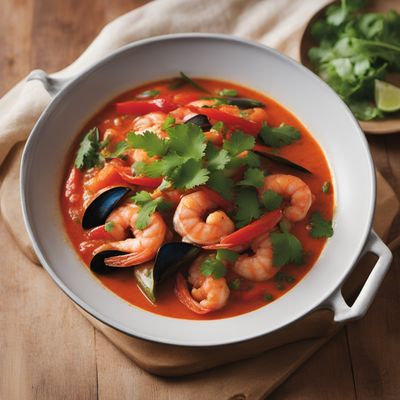
Cuisine
Hamburg cuisine
Hamburg cuisine is characterized by its use of fresh seafood, such as herring, cod, and shrimp, as well as spices and herbs such as dill, parsley, and mustard. The dishes are often light and flavorful, with a focus on simple preparation methods that highlight the natural flavors of the ingredients.
Typical ingredients
Seafood (such as herring, cod, shrimp), Potatoes, Onions, Dill, Parsley, Mustard, Other spices and herbs
Presentation and garnishing
Hamburg cuisine is often presented in a simple and elegant manner, with a focus on the natural beauty of the ingredients. Garnishes are typically minimal, and the dishes are often served with a side of potatoes or other vegetables.
The city is known for its production of high-quality fish, which is often served alongside Hamburg cuisine.
More cuisines from this region...
Swabian cuisine, Bavarian cuisine, Pomeranian cuisine, Schleswig-Holstein cuisine, Silesian cuisine, Rhenish-Hessian cuisine, Saxon cuisine, Brandenburg cuisine, Mecklenburg cuisine, Palatine cuisine
History
Hamburg cuisine has a long history that dates back to the Middle Ages. The city's location on the Elbe River and its proximity to the North Sea have played a significant role in shaping the cuisine. Over the years, the cuisine has evolved to include new ingredients and cooking techniques, but it has remained true to its roots.
Cultural significance
Hamburg cuisine is an important part of the city's cultural heritage. It is often served at traditional festivals and celebrations, and is a source of pride for the local people.
Health benefits and considerations
Hamburg cuisine is generally considered to be healthy, as it is made with fresh, locally sourced ingredients. However, some dishes may be high in sodium, so it is important to enjoy them in moderation.
Hamburg cuisine recipes Browse all »

Salmon Burger with Dill Sauce
Savory Salmon Delight: A Hamburg Twist on Spanish Bocadillo

Hamburg Moqueca
Savory Seafood Delight: Hamburg Moqueca

Hamburgi Mandi
Savory Hamburgi Mandi: A Fusion of Yemeni and Hamburg Flavors

Hamburg-Style Baked Delight
Savory Baked Hamburg Surprise

Hamburg-style Spicy Noodle Stir-Fry
Fiery Fusion: Hamburg-style Spicy Noodle Stir-Fry

Hamburg Tuna and Bean Salad
Savory Delights: Hamburg's Tantalizing Tuna and Bean Salad

Hamburg-style Garlic Rabbit
Savory Rabbit Delight: Hamburg's Garlic Infusion

Kimchi Pancakes with a Twist
Savory Kimchi Pancakes with a Hamburg Twist

Hamburg Brodetto
Savory Seafood Stew with a Hamburg Twist

Zuf Burger
Savory Algerian-Inspired Zuf Burger with a Hamburg Twist

Coconut Fish with Hamburg Twist
Hamburg Coconut Fish Delight

Zlebiye Hamburg Style
Crispy and Flavorful Zlebiye Hamburg Style